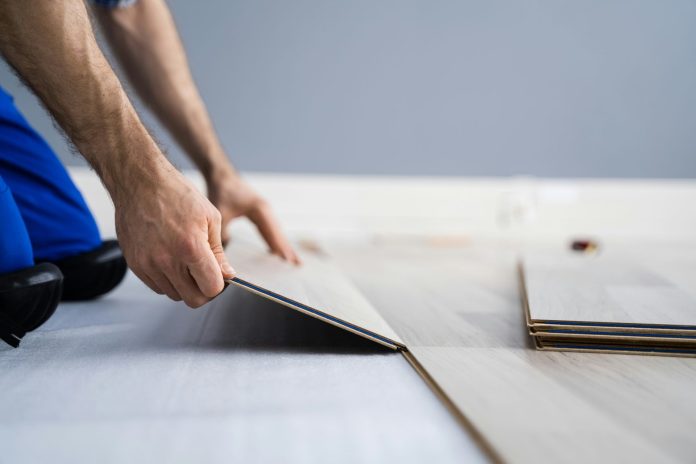Renovating a commercial space or retail environment often involves updating the flooring. But what if you could skip the messy and time-consuming process of ripping up the old floor? The question of whether you can install new flooring over existing floors is a common one, and the answer is… it depends.
In this comprehensive guide, we’ll explore the possibilities and potential pitfalls of installing new flooring over existing floors, helping you make the right decision for your commercial space, using information about the services provided by Gillett Flooring.
Why Consider Installing New Flooring Over Existing Floors?
Before we delve into the details, let’s examine why you might consider this approach:
- Cost Savings: Skipping the removal of the old floor can save you money on labour and disposal costs.
- Time Savings: Removing old flooring can be a lengthy and disruptive process. Installing over the existing floor can significantly reduce the project timeline.
- Reduced Disruption: Removing old flooring can create a lot of dust and debris, which can be particularly problematic in a commercial environment. Installing over the existing floor minimises disruption to your business operations.
- Potential for Added Insulation: The existing floor can provide an extra layer of insulation, potentially reducing energy costs.
- Sound Dampening: The existing floor can also help to dampen sound, creating a quieter and more comfortable environment.
Factors to Consider Before Installing Over Existing Floors
While installing over existing floors offers several advantages, it’s crucial to consider these factors carefully:
Condition of the Existing Floor: This is the most important factor. The existing floor must be in good condition – level, stable, and free from significant damage.
- Levelness: If the existing floor is uneven, it can create problems with the new flooring, leading to uneven wear and tear, or even damage. Significant unevenness will likely require a levelling compound before the new floor can be installed.
- Stability: The existing floor must be securely attached to the subfloor. Loose tiles or planks can create an unstable surface for the new flooring.
- Damage: Cracks, holes, or water damage can compromise the integrity of the new flooring. Any necessary repairs must be completed before installation.
Type of Existing Floor: Some flooring types are more suitable for being covered than others.
- Tile: Tile can be a good base for new flooring if it’s level and in good condition. However, you may need to address grout lines to create a smooth surface.
- Vinyl Sheet or Tile: Vinyl can be covered if it’s securely attached and in good condition. However, loose or damaged vinyl should be removed.
- Carpet: Covering carpet is generally not recommended, as it can create an uneven and unstable surface. Additionally, carpets can trap moisture and promote mould growth.
- Wood: Wood floors can be covered if they’re level and in good condition. However, you may need to address any squeaks or loose boards.
Type of New Flooring: Some flooring types are better suited for installation over existing floors than others.
- Luxury Vinyl Tile (LVT): LVT is a popular choice for installing over existing floors because it’s relatively thin, durable, and easy to install.
- Laminate Flooring: Laminate flooring can also be installed over existing floors, but it’s important to use a moisture barrier to protect the laminate from moisture.
- Engineered Wood Flooring: Engineered wood flooring can be installed over existing floors, but it’s important to ensure that the existing floor is level and stable.
- Carpet Tiles: Carpet tiles can be installed over some existing hard flooring surfaces, but they are not recommended for installation over carpet.
- Floor Height: Adding a new layer of flooring will raise the floor height. This can create problems with doors, transitions to other rooms, and appliances. Be sure to consider the added height before making a decision.
- Moisture: Moisture can be a significant problem when installing over existing floors. Trapped moisture can lead to mould growth and damage to both the existing and new flooring. A moisture test should be conducted to assess the moisture level of the subfloor.
- Adhesive Compatibility: Ensure that the adhesive used to install the new flooring is compatible with the existing flooring material.
When is it Not a Good Idea to Install Over Existing Floors?
There are several situations where it’s generally not advisable to install new flooring over existing floors:
- The existing floor is significantly damaged or uneven.
- The existing floor is loose or unstable.
- There are signs of moisture problems.
- You’re installing carpet over carpet.
- The added floor height will create significant problems.
- You’re unsure about the compatibility of the existing and new flooring materials.
Preparing the Existing Floor
If you decide to install new flooring over an existing floor, proper preparation is essential. Here are some steps you may need to take:
- Clean the Existing Floor: Thoroughly clean the existing floor to remove dirt, dust, and debris.
- Repair Any Damage: Repair any cracks, holes, or loose tiles.
- Level the Floor: Use a levelling compound to create a smooth, level surface.
- Remove Grout Haze: Remove any grout haze from tiled floors.
- Apply a Primer: Apply a primer to the existing floor to improve adhesion.
ce more appealing and increase the safety and efficiency of your daily routines.
Conclusion: Weighing the Pros and Cons
Installing new flooring over existing floors can be a viable option, offering cost and time savings. However, it’s crucial to carefully assess the condition of the existing floor, the type of new flooring you’re considering, and potential problems with floor height and moisture. When in doubt, it’s always best to consult with a professional flooring contractor.



 Bitcoin
Bitcoin  Ethereum
Ethereum  Tether
Tether  XRP
XRP  Solana
Solana  USDC
USDC  Cardano
Cardano  TRON
TRON  Lido Staked Ether
Lido Staked Ether  Avalanche
Avalanche  Toncoin
Toncoin